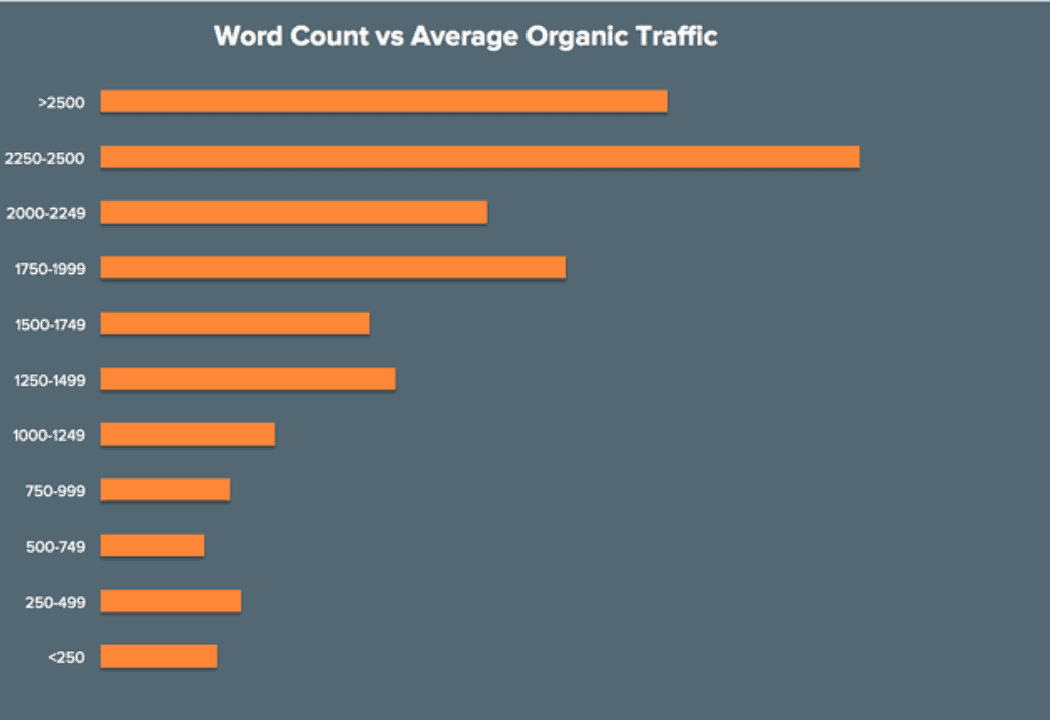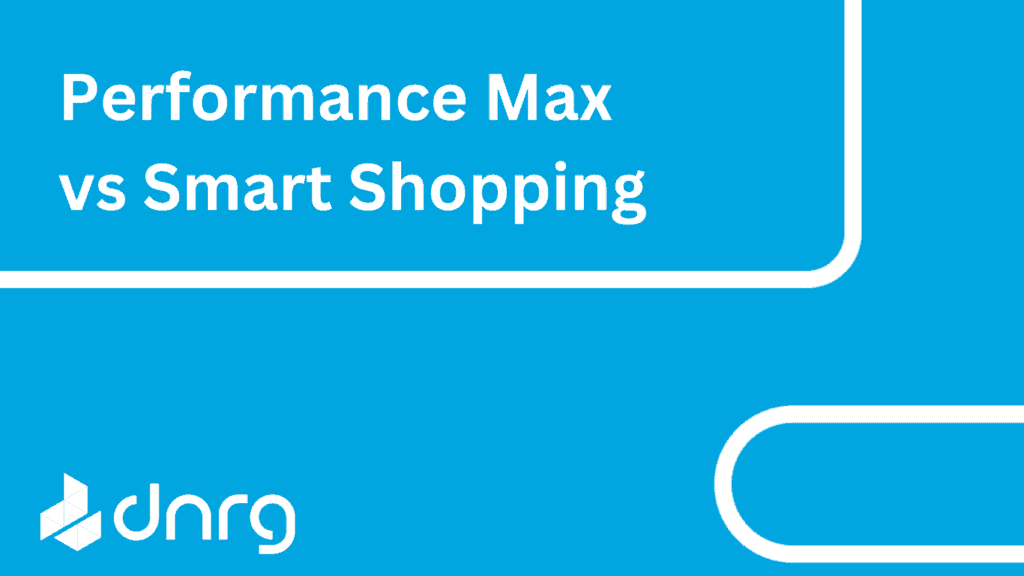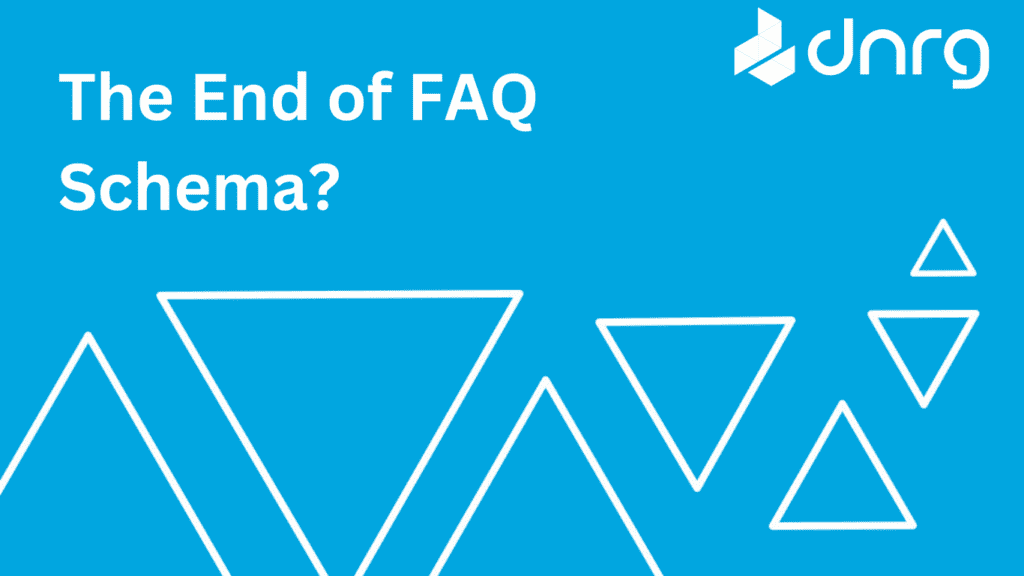Keeping Users On Your Site For Longer
This article will delve into the different SEO tactics that will keep people on your site for longer, improving engagement and increasing leads and conversions.
Long-Form Content
The way users are engaging with content is changing. The days of short pieces of content, written due to the misplaced belief that people’s attention spans are that of a rather intelligent goldfish, are over. Long-form content has proven to be more engaging, more knowledgeable and more shareable. Which strongly suggests it’ll positively impact your SEO.
What is long-form content?
It is generally considered that long-form content is between 1000 and 7500 words. Its purpose is to provide in-depth and valuable information to the reader, something which is harder to do when the word count drops below 1000 words. Short-form content, those blogs below a thousand words, definitely have their place in your SEO campaigns, especially when the goal of the content is to give a quick answer or brief overview.
However, if you want to read the definitive way of curing meat or why Beyonce is the voice of a generation, topics can’t possibly be covered in a few hundred words, then you need to dive deeper and engage your reader on more levels.
 Long-form content and your backlinks
Long-form content and your backlinks
But what impact will long-form content have on your SEO moving forward? It allows more chances to sprinkle those keywords and anchor text that appeal so much to our search engine overlords. That seems obvious enough, so what other benefits are there?
Research shows that longer content has a greater probability of earning quality backlinks. The reason for this seems to be that long-form content has more depth and is, therefore, more informational. The more informational and useful it is, the more valuable it is deemed to be.
Users don’t want to search the web for bits and pieces of information they have to string together afterwards, and Google understands that. So a piece of content that covers everything the user searches for, in-depth and to a good level of knowledge, will be ranked higher and seen by more users, generating more organic backlinks.
These backlink preferences are also mirrored by social shares. Neil Patel ran a study that proved quite conclusively that users engaged far more with content over 1500 words than that of less than 1500, with Twitter users engaging with his longer posts 68.1% more often than shorter posts. This seems to suggest that social media users want to share content that is useful and comprehensive.
Using long-form content to increase session time
Another impact that long-form content will have on-site is Dwell-time. Although it’s not confirmed that Google uses Dwell time to change algorithms, it shouldn’t be discarded altogether as Google Analytics tracks how long each page session lasts.
Imagine you were looking for an article on how to cobble together a pair of shoes and you clicked on the top-ranked article but found it so useless that you bounced after a few seconds. Then you clicked on the 2nd ranking and found the article so informative and interesting that you read the whole thing, even though it took you nearly 8 mins. Even though Google would see this metric and although it may count as a bounce, the fact the bounce was a long time coming should count in your page’s favour.
It is clear that long-form content could play a very important role in your SEO campaigns in the coming year, but it is incredibly important to stress that this will only positively impact your leads and conversions if the content is valuable, well written, and informative. Without these qualities, it doesn’t matter how long it is, it won’t be ranked, linked or shared.
Fulfil Google’s EAT Principle
In line with long-form content, fulfilling Google’s EAT principle will give you a stronger chance of creating engaging and link-worthy content. However, it must be said that as Google refuses to hand over the algorithms for how they choose who goes where, this is a more informed opinion than cold hard facts, but an informed opinion based on research.
Firstly we need to clarify what the EAT principle is. Eat stands for Expertise, Authoritativeness and Trustworthiness. These are the minimum requirements that people expect for someone to be a leader in the field (politics notwithstanding) and the same is true of how Google expects its businesses to behave. They judge the website’s individual content, the website itself and the content creator.
Expertise
Expertise is defined as ‘Expert skill or knowledge in a particular field’ tells us and Google how knowledgeable the site owner is on their subject matter. For example, a blog post on insurance written by a broker would be more knowledgeable than one written by a celebrity chef.
Authoritativeness
Authoritativeness is when a person is able to be trusted as accurate. If expertise is a measure of knowledge and skill then authoritativeness is a measure of how your expertise stands apart from the competition. If you have a question about football you’re more likely to turn to someone who watches the Premier League and has a fantasy football team rather than a friend who has two left feet. The same is true for online information.
Trustworthiness
Trustworthiness is how much respect your brand and website has. You can easily create a lot of content, but if it isn’t trustworthy then you won’t be ranked and no one will read or engage with it. Users are more likely to believe and trust an article in the Washington Post than they would in a subreddit.
One of the factors that Google uses to measure trust is backlinks, of which there are three main ‘pillars,’ trust flow, topical trust flow, and citation flow. This author believes that if more users are linking to this particular website, then it shows Google that it can be trusted.
By using these principles to guide how you operate your SEO and run your campaigns, we believe that not only will you create inviting and useful content but you will also show Google you are trusted to maintain a strong presence on their search engine. Google is a business as well, and they want to provide their customers – those who use the search engine – with a brilliant product. If you and your site help them do that, they will reward you with a better ranking.
Video content
A picture is worth a thousand words. On that basis, a video is worth 1.8 million words. And the maths works out. But that isn’t the main reason why you should speak to your SEO agency in Bristol about incorporating video content into your 2022 campaigns. But how does Video content impact how Google sees your business?
Why use video content?
Like long-form content, video content is a great way of maintaining dwell time and reducing bounce rate. Convincing a user to stay on your site has to happen in a matter of seconds, and this is where videos can really help. The nature of video content is to engage the user almost immediately which means that people are more likely to absorb the message.
It has been shown that people spend 2 times less on pages without images than those with them. The longer they watch your content, the longer they spend on your page and the more likely (we think) that Google will recognise the value of your content and your page.
Video content and Google rankings
Of course, this wouldn’t be an SEO blog without mentioning rankings. Google has a perceived preference for video especially when the search intent is ‘how to…’ Indeed, your videos can rank directly in Google, using Google’s video schema.
This is because the content you are putting onto Google is both valuable and relevant, and will generally lead to an increased click-through rate. Studies suggest that over 60% of general searches in Google will lead to a video. Not only this, but it seems that even a quick Google search will bring up a video, and those videos that do rank, rank highly.
Increase conversions
On top of that, if people are spending more time on your page, then there is a good chance that they will delve a little deeper into whatever you’re selling, increasing the chances of conversions. The key goal is to keep people on your site, moving from page to page and reducing bounce rates. Video content is another door to lead the user through the site. Incorporating links to and from your video content will also bring people to the site and raise you up through Google’s algorithms.
Conclusion
It is always difficult to predict how trends will change year on year, but one thing that is certain is that SEO will become more nuanced. That is just how the world works. By incorporating these three suggestions in your campaign planning, we believe that you will have a strong and profitable future, wherever you’re working from.




